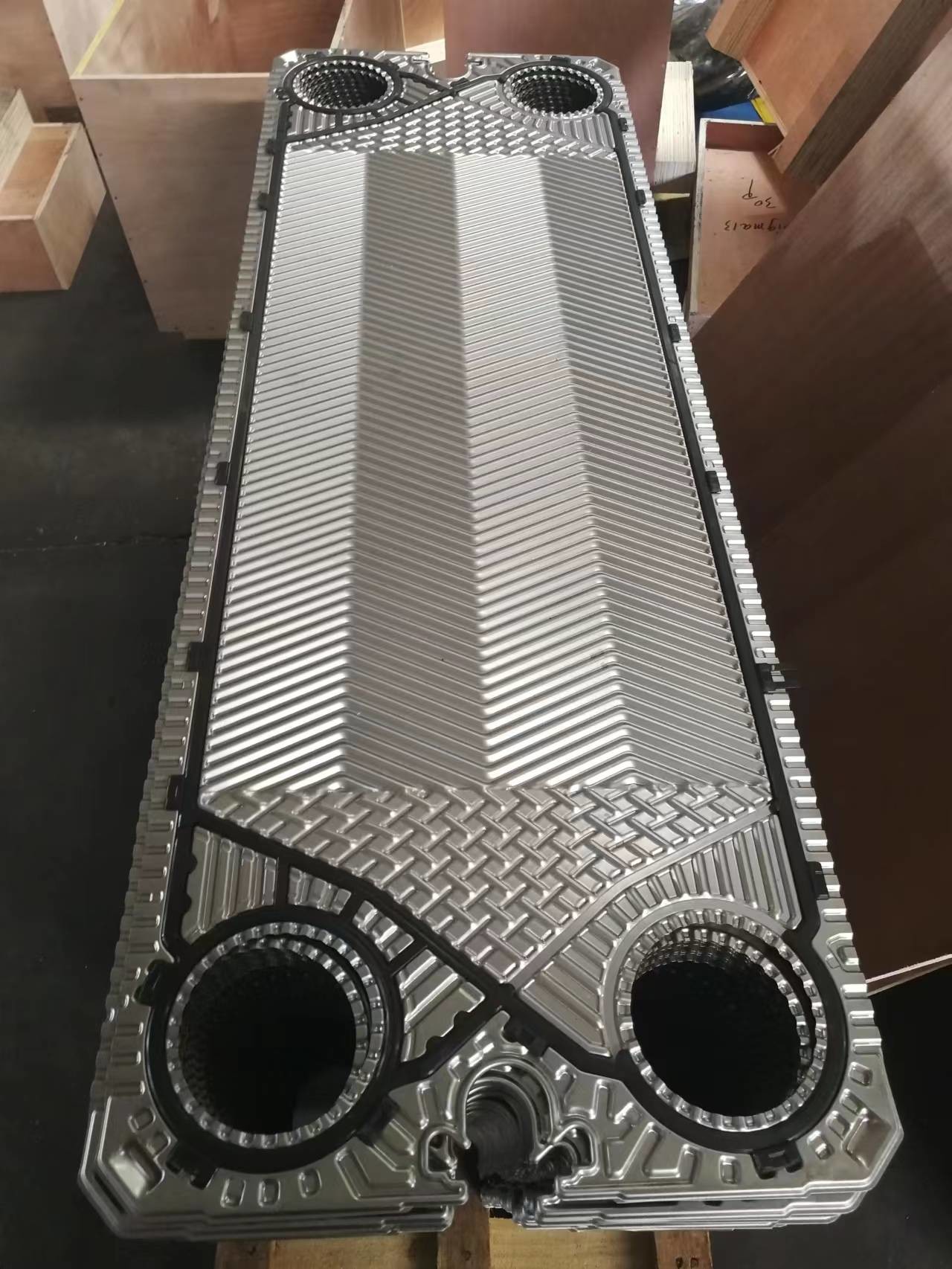Product Description
Q030,Q055,R8G1,A145 Heat Exchanger Plate for Industrial Operations
M20B MX25B MX25M
Heat Exchanger Plates
Heat exchanger boards with product models Q030, Q055, R8G1 and A145
are used in industrial operations. These boards can be used with
different heat exchanger models such as M20B, MX25B and MX25M to
provide efficient heat exchange solutions.
Key Features:
High-Quality Material: These heat exchanger plates are made of
high-quality alloy material with excellent heat conduction
properties and corrosion resistance.
Diversity: Different models of heat exchanger plates can be used in
a variety of industrial applications to meet the heat exchange
needs under different temperatures, flow rates and pressure
conditions.
Efficient heat conduction: The optimized design of the heat
exchanger plate improves heat conduction efficiency, promoting heat
transfer and energy utilization efficiency.
Modular design: Compatible with a variety of heat exchanger
configurations, ensuring applicability and flexibility.
Stability and Reliability: These plates are structurally sound and
suitable for use in various industrial environments, providing a
long-lasting and reliable heat exchange solution.
| Brand | Model |
| H17,N35,N50,J060,J092,J107,J185,B063,A055,A085,Q080 Q030,Q055,R8G1,A145,TR9L4,TR9L3,TR9L2,TR9L1,SR14GD |
| Material | Specification |
| Stainless Steel | SUS304 316 316L 310S 904 |
| Titanium and titanium-palladium alloy | TAi TAi-Pd |
| Hastelloy | C276 D205 B2G |
| Nickel | Ni200 Ni201 |
| Molybdenum | 254 |
Products are mainly suitable for ACCESSEN/GEA (Kelvion)/ APV/
Sondex/ Tranter/ Hisaka/ API/ Funke/ Vicarb/ Mueller/ SWEP/
Fischer/ AGC/ Thermalwave/ ITT/ LHE/ DHP, etc.
Applacations
| Plate material | Suitable for fluids |
| Stainless steel (SUS304.316, etc.) | Purified water, river water, edible oil, mineral oil |
| Titanium and titanium palladium (Ti, Ti-Pd) | Sea water, salt water, salt compounds |
| 20Cr,18Ni,6Mo(254SMO) | Dilute sulfuric acid, dilute salt aqueous solution, inorganic
aqueous solution |
| Nickel (Ni) | High temperature, high concentration caustic soda |
| HASTELLOY alloy (C276, D205, B2G) | Concentrated sulfuric acid, hydrochloric acid, phosphoric acid
|
Plate heat exchanger plate thickness configuration
- AISI 304 is usually 0.4 or 0.5 mm thickness
- AISI 316 is always 0.5 and 0.6 mm
- 254 SMO (high alloy) typically 0.6 mm
- Titanium plates are always 0.5 and 0.6 mm
- Some have thicker plates (for high pressure applications)
- Some PHEs have 0.4 mm (low pressure operation)
- Hastelloy C-276 (nickel alloy) typically 0.6 mm
Production Process:
- Raw material preparation: High-quality stainless steel plates are selected as raw materials
due to their excellent corrosion resistance and thermal
conductivity. The plate thickness is determined based on product
specifications and design requirements.
- Cutting and leveling: The stainless steel plates are accurately cut using machine tools
to meet the design requirements. After cutting, leveling treatment
is performed to ensure a smooth and even surface.
- Stamping: The flattened plates undergo stamping using a hydraulic press to
create specific herringbone patterns. The resulting plates have a
high turbulence coefficient, promoting efficient heat transfer.
Precise control is maintained during the stamping process to
prevent plate deformation or damage.
- Surface treatment: The plates undergo surface treatment such as polishing,
sandblasting, or coating to enhance corrosion resistance and heat
transfer performance. The choice of treatment method depends on
specific requirements.
- Assembly and inspection: The plates are assembled according to the design requirements,
forming a detachable plate heat exchanger with rubber gasket seals
or a fully welded plate heat exchanger through argon arc welding.
Tight fitting and absence of gaps are ensured during assembly. A
rigorous performance pressure test is conducted after assembly, and
a factory report is issued to verify compliance with quality
standards.




